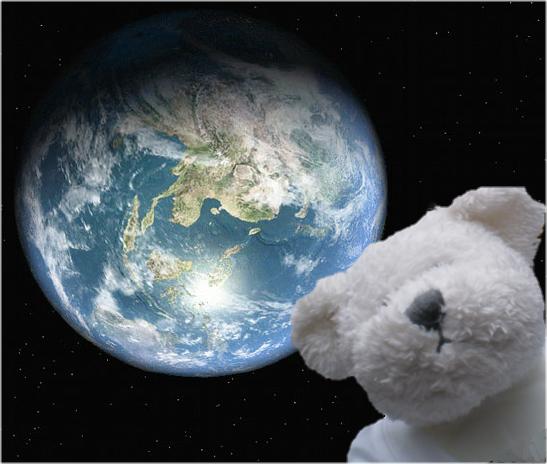Well, so far it is us. The commies in Star City were first into space but the good ol' US of A put a man on the moon and that's what gets remembered. So we can't rest on our laurels just because we're the first to develop it - and commit money - if we're going to put Bloggy into space we need to get it done.
What am I talking about? Bloggy in space?

It's Project Calliope, the brainchild of our friendly Daytime Astronomer Alex Antunes. His goal? Build and launch his own satellite, which is daunting enough, but even more challenging will include;
a homemade ionospheric detector, launching it into space, and applying sonification to convert the signals to MIDI so that any HAM receiver can play space 'live' or via our website. We're converting the ionosphere to sheet music, basically.It's music. Made by space.
Horde your Doritos, folks, because I predict a whole generation of stoners are going to love this thing.
There are obstacles, of course. Nothing like this has ever been done, so the technology is not trivial, and we have to hope that Interorbital Systems, the company behind TubeSat, generates enough interest to actually launch the big rocket and doesn't just walk off with the money.
Then there is a people issue. Projects like these always start the way those Mickey Rooney/Judy Garland "Let's put on a show!" movies
That's part of the reason I signed up to help. When I went to Ansoft Corp. early in 1995 it was a company losing money with an obscure technical product. Recruiting people at all, much less to move to Pittsburgh, was tough. Getting people to buy the technology was tough too. But after an IPO and then a decade later an $800 million acquisition it was easy to find people who say they would have worked there. A more familiar example now is Google. I can't walk down the street without someone finding out what I do and telling me they would have been an early person at Google.
When I started Scientific Blogging, I asked a few people if they wanted to help and be partners in it. Like those Mickey Rooney/Judy Garland movies there were a few enthusiastic responses until it came time to actually do something. Then you could hear crickets chirping because most people won't help if they don't get paid.
Interlude: Music about science that did get made:
So how can I help with motivation? Well, I can't. If I were closer I could pitch in myself but this has to be someone else's baby. However, you can help by spreading the word about it. I can assure you the public relations value of something like this is not anywhere near worth the money even a small satellite costs unless Alex ends up sitting on The Today Show wearing our shirt and making Matt Lauer kiss Bloggy, but the value in finding people who can (a) help locally or (b) keep the Project Calliope crew motivated is priceless.
So the Space Race is on, baby. You think the folks at Discover are going to sit back and watch us dominate science blogging from above? I think not.




Comments